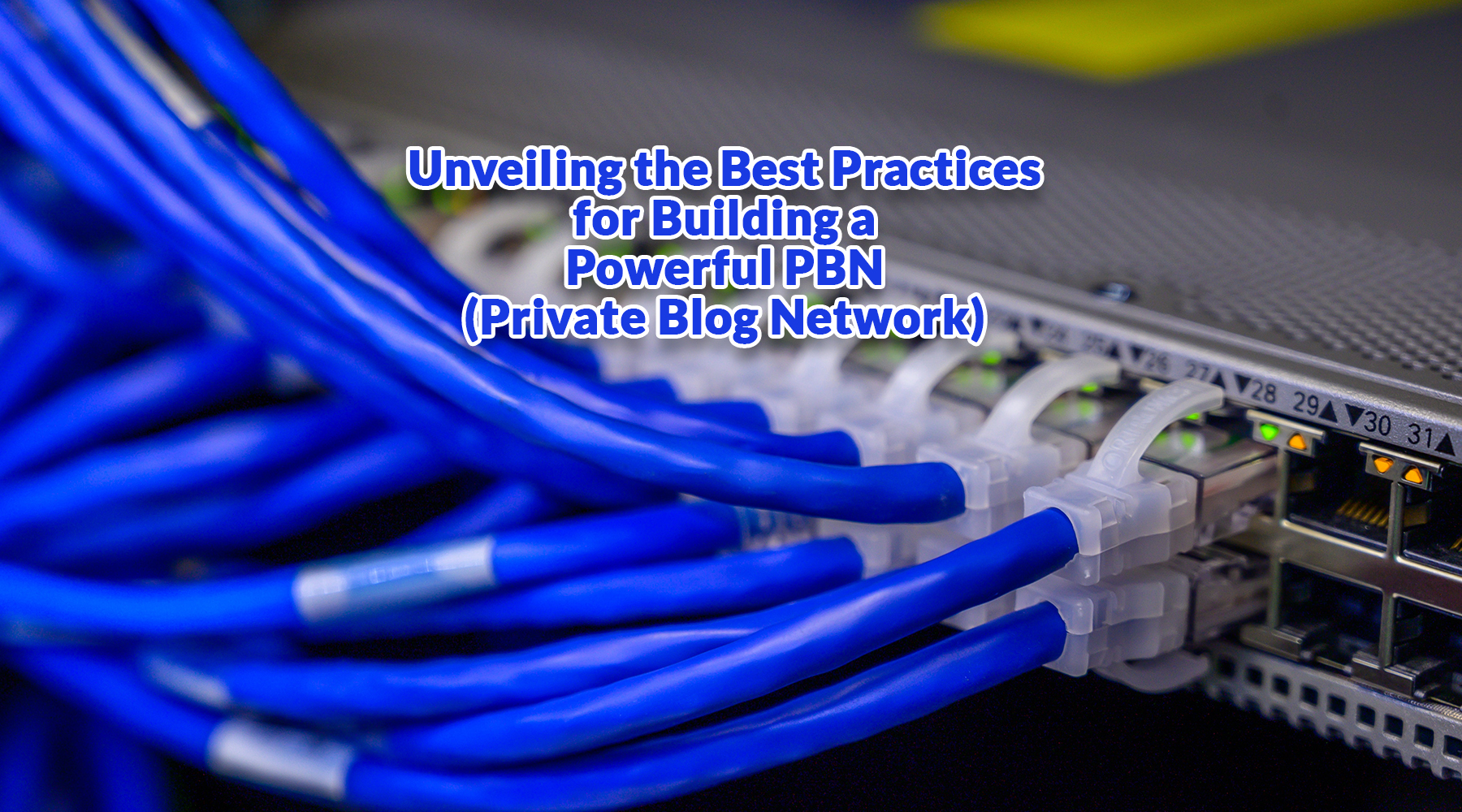
A private blog network, or PBN, is a powerful tool for improving a website’s search engine rankings. By creating multiple sites with high-quality backlinks pointing to a main site, PBNs help boost organic traffic, improve relevancy, and increase website visibility. It’s important, however, to understand the different approaches for constructing a PBN in order to ensure optimal results. In this article, we’ll explore the optimal approaches for constructing a PBN and how to protect your network from detection.
Table of Contents
- What is a PBN?
- Benefits of Using a PBN
- Choosing the Right Domains
- Setting Up Your Network
- Protecting Your Network from Detection
- Frequently Asked Questions
- Conclusion
What is a PBN?
You may have heard about PBNs, but do you know what they are? A Private Blog Network (PBN) is a set of websites and blogs that are used to boost the rankings of a particular website. A PBN is created by a webmaster or a digital marketer who owns multiple websites that are interconnected and link back to the main website. This technique is used to create a stronger presence on the web and to increase search engine rankings. The main goal of a PBN is to provide powerful backlinks to the main website, which can help to improve its visibility and authority within the search engine results pages. PBNs are often used to manipulate search engine algorithms and increase website rankings, as well as to add credibility to a website.
Benefits of Using a PBN
Gaining insight into the advantages of setting up a PBN can help you make informed decisions about your online presence. One of the primary benefits of using a PBN is the ability to gain more control over your online presence. By using a PBN, you can create a network of sites that are connected to each other and can be used to control the flow of traffic and link building. Additionally, using a PBN can help you create a more powerful presence by allowing you to control where and how your content is distributed. This can be beneficial for both SEO and marketing purposes.
Another benefit of a PBN is that it can help to protect your sites from any potential penalties or blacklistings that might occur due to malicious activity. By setting up a network of sites that are connected to each other, it can be easier to identify any malicious or suspicious activity and take the necessary steps to protect your sites. Additionally, using a PBN can help to ensure that any new sites that you create are not seen as a part of the same network, which can help to protect them from any potential penalties or blacklistings.
Choosing the Right Domains
Choosing the right domains for your PBN is key to getting the most out of it – so don’t skimp! When selecting domains, it’s important to look for ones that have a good domain authority and a reasonably clean backlink profile. You’ll also want to make sure that the domain has not been used by a previous PBN network. It’s also important to choose domains that are relevant to your niche, as this will help to ensure that the backlinks you generate are more likely to be noticed by search engines. If you’re not sure what a good domain looks like, it’s a good idea to consult with an experienced SEO specialist before purchasing any domains. Additionally, it’s best to avoid domains that are too new, as these may not have had time to build up any real authority. Finally, make sure to register your domains with a reputable registrar to ensure the safety of your network.
Setting Up Your Network
Once you’ve chosen your domains, it’s time to set up your network! Setting up your network is an important step in creating a successful Private Blog Network (PBN). It is important to make sure that each domain you choose is properly indexed by search engines and that each domain is hosted on a different server. This will prevent search engines from recognizing that all the domains are part of the same network. Additionally, each domain should have different hosting accounts, IP addresses, and name servers. This will help to ensure that each domain appears to be an independent site and will help prevent them from being associated with each other.
It is also important to make sure that each domain has a unique theme or content associated with it. This will help search engines to index each domain properly and will also make it easier for visitors to find the information they are looking for. Additionally, it is important to make sure that each domain has a strong link profile, as this will help to increase the overall authority of the PBN. Finally, it is important to make sure that each domain is properly configured and maintained to ensure that it remains secure and operational. Following these steps will help to ensure that your PBN is set up properly and will help to ensure its success.
Protecting Your Network from Detection
Protecting your network from detection can be a tricky process, but it’s essential to ensure your success. One of the most important aspects of protecting your network is to make sure that the domains you use are as varied and unique as possible. You should also make sure that the web hosting providers you use for each domain are different from each other. This helps to avoid detection since it is harder to trace all of the domains back to the same source. Additionally, you should make sure that the IP addresses of each hosting provider are different from each other. This will further reduce the chances of your network being detected. Finally, you should make sure to use a variety of content management systems and themes for your domains. This will make it harder for search engines to detect that all of your domains are connected.
Frequently Asked Questions
How much does it cost to set up a PBN?
The cost of setting up a Private Blog Network (PBN) can vary depending on the size and scope of the network. Generally speaking, most PBNs require some kind of hosting, domain names, and content creation services. These costs can range from as little as a few hundred dollars to thousands of dollars, depending on the size and scope of the project. Additionally, setting up a PBN requires a certain amount of technical knowledge, so hiring someone to design and maintain the network may also add to the cost.
How many domains should I use for my PBN?
The number of domains you should use for your private blog network (PBN) depends on the size of your project and the desired outcome. Generally, it’s recommended to use a minimum of 10 domains to ensure a diverse link profile, while larger projects may require up to 100 domains or more. Additionally, it’s important to ensure that each domain is varied in its content, anchor text, and IP address to avoid detection. Lastly, each domain should be hosted on a different web host and use different nameservers to properly diversify your link profile.
Is it safe to purchase expired domains for my PBN?
Buying expired domains for a Private Blog Network (PBN) isn’t always safe. It’s possible that the domain has been blacklisted by search engines, or that it carries a spam penalty that could be transferred to your other sites. Additionally, expired domains are sometimes picked up by spammers or other malicious actors, so there’s always a chance that the domain you purchase has been used for spammy activities in the past. It’s best to do your research and find out as much as you can about the domain before purchasing it for your PBN.
What type of hosting should I use for my PBN?
When it comes to hosting a private blog network (PBN), it is important to choose a hosting provider with a good reputation and reliable customer service. A good hosting company will provide you with a secure server, protect you from malware and other cyber-attacks, and also ensure your website is up and running with minimal downtime. As such, it’s recommended to research different hosting companies and their features to find the best fit for your PBN. Consider factors such as speed, pricing, scalability, and support when choosing a hosting provider for your PBN.
How often should I update the content on my PBN sites?
Updating content on a private blog network (PBN) is essential for keeping it authoritative and relevant. How often content should be updated depends on the nature and purpose of each site. Generally, it’s best to update content regularly, such as on a weekly basis. This ensures that search engine crawlers view the content as fresh and authoritative. Additionally, updating content more often can help ensure that websites don’t become stale or out of date. However, it’s important to consider the purpose of each website when determining how often content should be updated.
Conclusion
Creating a private blog network (PBN) is an effective way to improve your website’s SEO and organic traffic. By carefully selecting domains and setting up your network correctly, you can ensure that your PBN is secure and undetectable. Additionally, by protecting your network from detection, you can ensure that your PBN will be effective for the long term. All in all, creating a PBN is a worthwhile endeavor that can yield positive results in terms of website visibility and organic traffic. With a little bit of research and effort, you can create an effective PBN that will help you reach your website’s goals and objectives.



